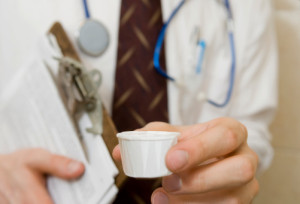Opiate addiction treatment is a necessary part of the recovery process for most addicts. Call 800-442-6158 Who Answers? now to learn more and to find rehab programs that will cater to your needs.
1. Professional Treatment Is Effective
According to the National Institute on Drug Abuse, professional addiction treatment is effective at stopping the use of dangerous substances, decreasing the criminal activity of patients, and improving patients’ social, psychological, and occupational functioning.
2. Longer Treatment Stays Are More Effective
The longer an individual stays in treatment, the more effective the program usually is for them. This has been studied numerous times, and the NIDA has stated as a result of years of research, that less than 90 days of treatment is not as effective than care that lasts 90 days or longer.
3. Maintenance with Medications Is Safe and Beneficial
Many detractors of the maintenance program believe that it is the same as “replacing one addiction with another” (NIDA). However, drugs like methadone and buprenorphine can be given in low doses every day so that they block the opioid receptors in the brain, minimize withdrawal symptoms and cravings, and do not cause euphoria.
4. The Use of Medications Minimizes Needless Suffering

Medication maintenance will help you get through the withdrawal stage and focus on recovery.
Unfortunately, those who become addicted to opioid drugs often have a very low tolerance for pain, and because the opioid withdrawal symptoms are so painful, forcing a person to go through this without the help of some sort of medication is not considered safe or beneficial.
5. Buprenorphine Is Usually Better for Those With Lower Dependencies
According to the Substance Abuse and Mental Health Services Administration, “Studies indicate that buprenorphine is equally as effective as moderate doses of methadone” but not as effective as optimal methadone doses. This is why individuals with severe dependencies often need to be maintained on methadone instead.
6. Naltrexone Is an Option
Naltrexone, an opioid antagonist drug, is a potential option for opioid addiction recovery. However, because it causes intense side effects in those who do relapse, it is usually best suited for individuals who have a strong motivation to quit.
7. It Isn’t Safe to Detox on Your Own
Though the withdrawal symptoms associated with opioid abuse are not usually considered life threatening, they can be severe enough to lead a person to relapse. Also, those who go through withdrawal without proper detox treatment often don’t seek addiction treatment afterwards.
8. Free Treatment Centers Do Exist
As stated by SAMHSA, 4 percent of all rehab centers in the United States were all-free programs as of 2008. There are also facilities that will provide partial-free care or work on a sliding fee scale.
9. Treatment Is More than One Program
Often, patients need aftercare options or to go through several treatment programs in order to create a strong recovery from opioid abuse. It is important to remember that the end of one program may not be the end of your treatment phase.
10. Behavioral Therapies Are Essential
Though medications can be helpful, you will need behavioral therapies as part of your rehab. These programs help change dangerous attitudes and beliefs about addiction and allow patients to learn better life skills for the future.
11. You Are Not Alone
According to the NIDA, it was estimated that “2.1 million people in the United States [were] suffering from substance abuse disorders related to prescription opioid pain relievers in 2012.” You are not the only one, and there is help for those like you.
12. Addiction Has Changed the Way Your Brain Works
Therefore, trying to stop using without the help of a professional rehab program is not safe. Because your willpower likely won’t be enough to put an end to your substance abuse, it is time to seek help.
13. After Withdrawal = The Most Dangerous Time for Overdose
As stated by the National Library of Medicine, most opioid overdose deaths occur after detox because a person’s tolerance has lowered. As a result, it is extremely important to attend addiction treatment after detox.
14. Your Family Can Help
Your loved ones being involved in your recovery will go a long way toward helping “strengthen and extend treatment benefits” (NIDA).
15. You Can Get Better
It may seem like a long and difficult journey now, but you can make a change and begin to heal from your substance use disorder. But the first step is seeking help; call 800-442-6158 Who Answers? today.









